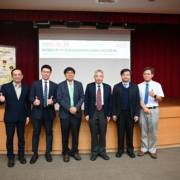【Event Report】Taipei Medical University Hosts “Symposium on Osteoporosis Prevention and Integrated Treatment Strategies in a Super-Aged Society,” Gathering Experts to Discuss Research Outcomes and Future Trends in Osteoporosis Prevention and Treatment
On Tuesday, October 29, 2024, the Health and Welfare Policy Research Center of Taipei Medical University held the “Symposium on Osteoporosis Prevention and Integrated Treatment Strategies in a Super-Aged Society.” The event aimed to explore effective approaches for osteoporosis prevention, diagnosis, and treatment from multiple perspectives, including policy, medical care, pharmaceuticals, and caregiving strategies. It also sought to raise public awareness of osteoporosis prevention, laying a solid foundation for the health of the population. Many scholars and experts attended the symposium, including Dr. Chen Chong-Huan, President of the Taiwanese Osteoporosis Association; Dr. Wu Meng-Huang, Director of the Orthopedics Department at Taipei Medical University Hospital; Professor Liao Chun-Te, Assistant Professor in the Long-Term Care Master’s Program at Taipei Medical University; and Kevin Cheng, Market Access Manager at TTY Biopharm Co., Ltd.
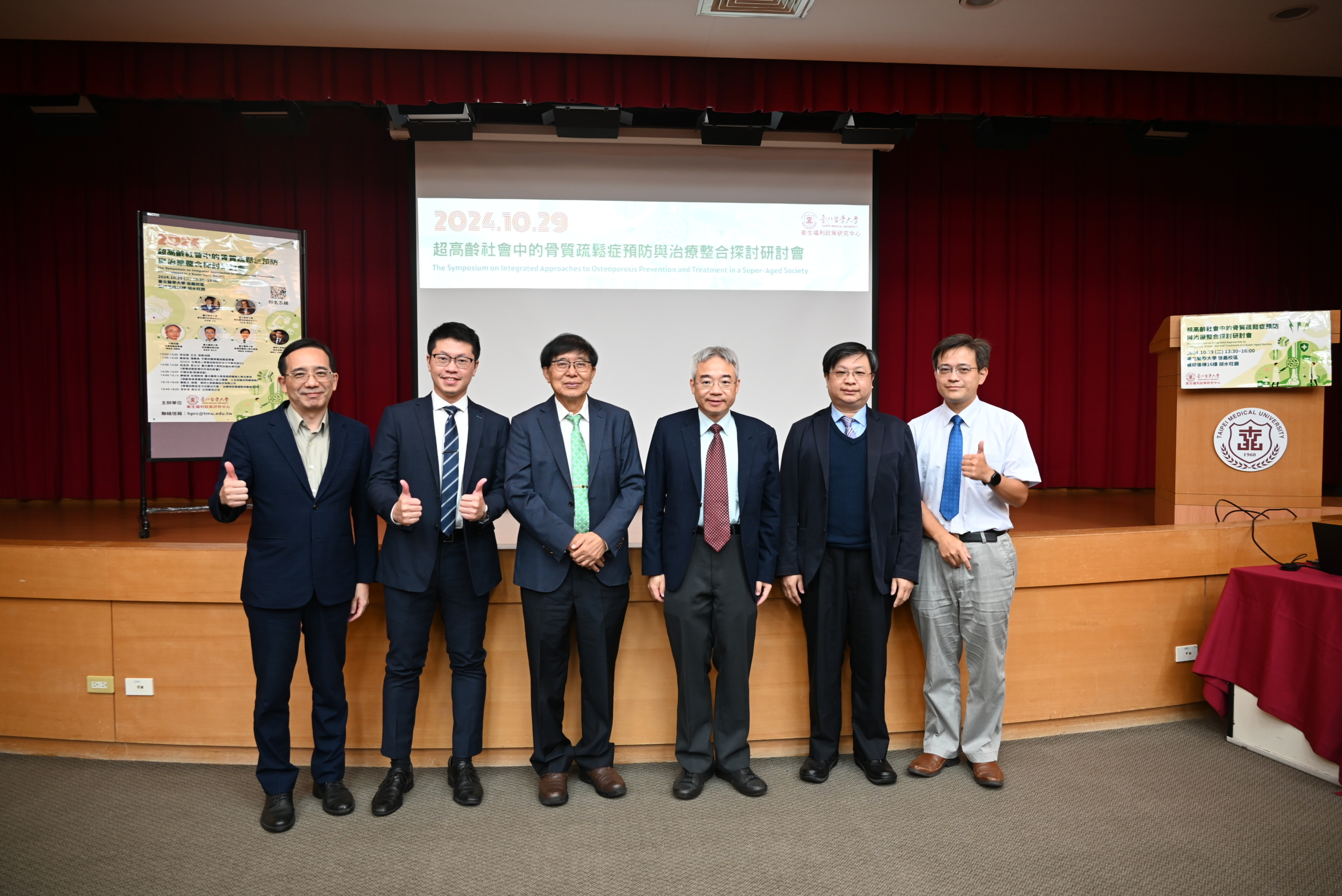
Photo Description (from left to right)
Vice Director Lee Chong-Xi of the Health and Welfare Policy Research Center at Taipei Medical University; Kevin Cheng, Market Access Manager at TTY Biopharm Co., Ltd.; Director Lee Po-Chang of the Health and Welfare Policy Research Center; Dr. Chen Chong-Huan, President of the Taiwanese Osteoporosis Association; Professor Liao Chun-Te, Assistant Professor in the Long-Term Care Master’s Program at Taipei Medical University; Dr. Wu Meng-Huang, Director of the Orthopedics Department at Taipei Medical University Hospital.
Director Lee Po-Chang Advocates for Enhanced Osteoporosis Screening and National Health Insurance Coverage to Improve Treatment Coverage for High-Risk Patients, Reducing Fracture Rates and Healthcare Burden
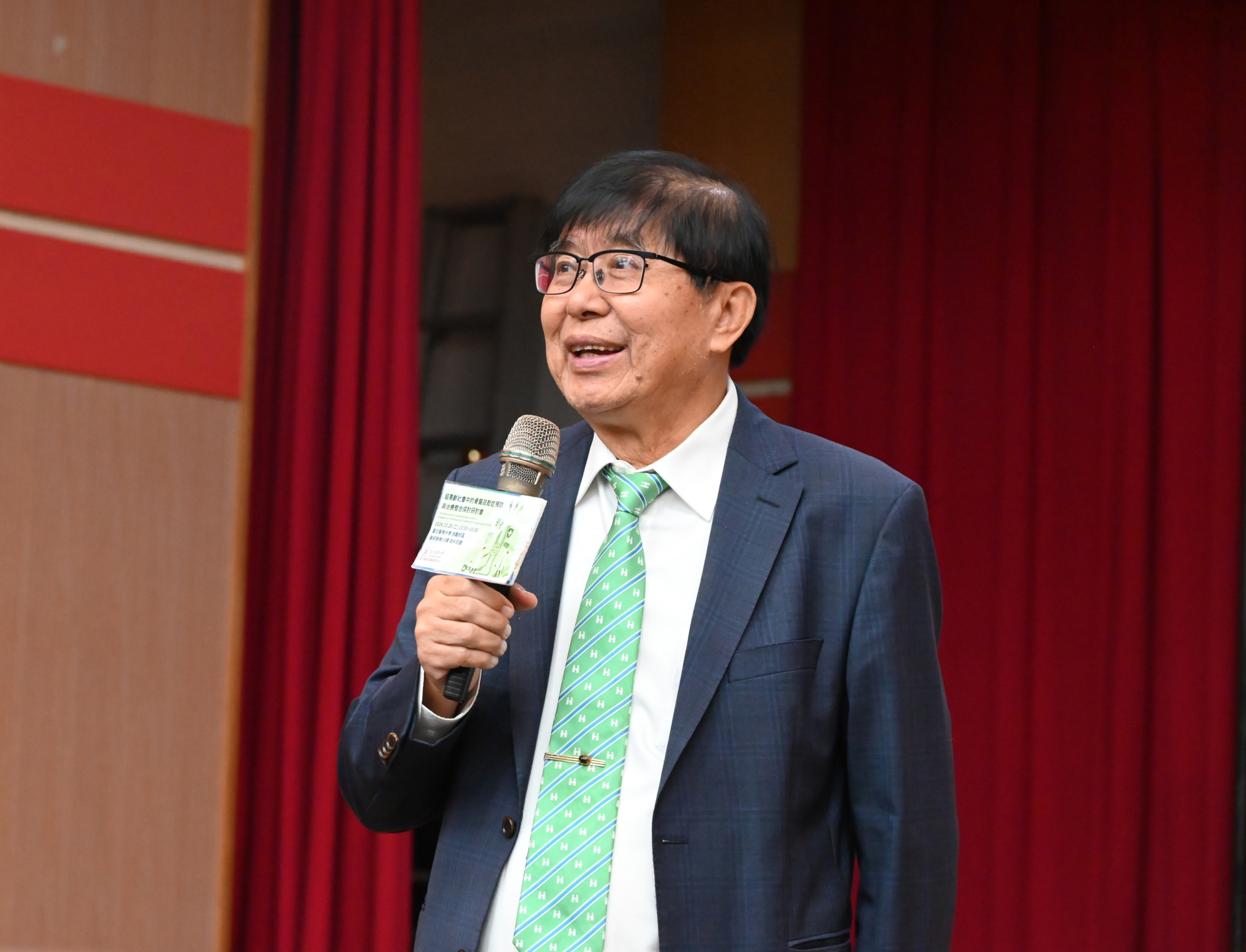
During his opening speech, Director Lee Po-Chang from the Health and Welfare Policy Research Center at Taipei Medical University emphasized that as Taiwan enters a super-aged society, the number of osteoporosis cases is expected to surge. Statistics indicate that Taiwan leads Asia in hip fracture incidence, with approximately 45% of osteoporosis patients experiencing fractures annually. He noted that fractures not only result in pain, hospitalization, and long-term bedridden states but also significantly impair patients’ mobility and quality of life, increasing the risk of disability and mortality.
Thus, promoting bone density screening, early diagnosis, and treatment is crucial for the health maintenance of elderly patients. Facing increasing demand, he suggested continuous evaluation and improvement of National Health Insurance coverage to ensure efficient use of resources. Future policy priorities should focus on expanding insurance coverage to encourage treatment for more high-risk patients, thereby reducing fracture rates and alleviating the healthcare burden. Furthermore, he called for collaboration between the medical community and the government, strengthening screening and health education promotion to effectively lower fracture risks, advance personalized treatment, and improve the well-being and quality of life for the elderly.
President Chen Chong-Huan Outlines the 2023 Consensus on Adult Osteoporosis Prevention, Emphasizing Prevention and Precision Treatment
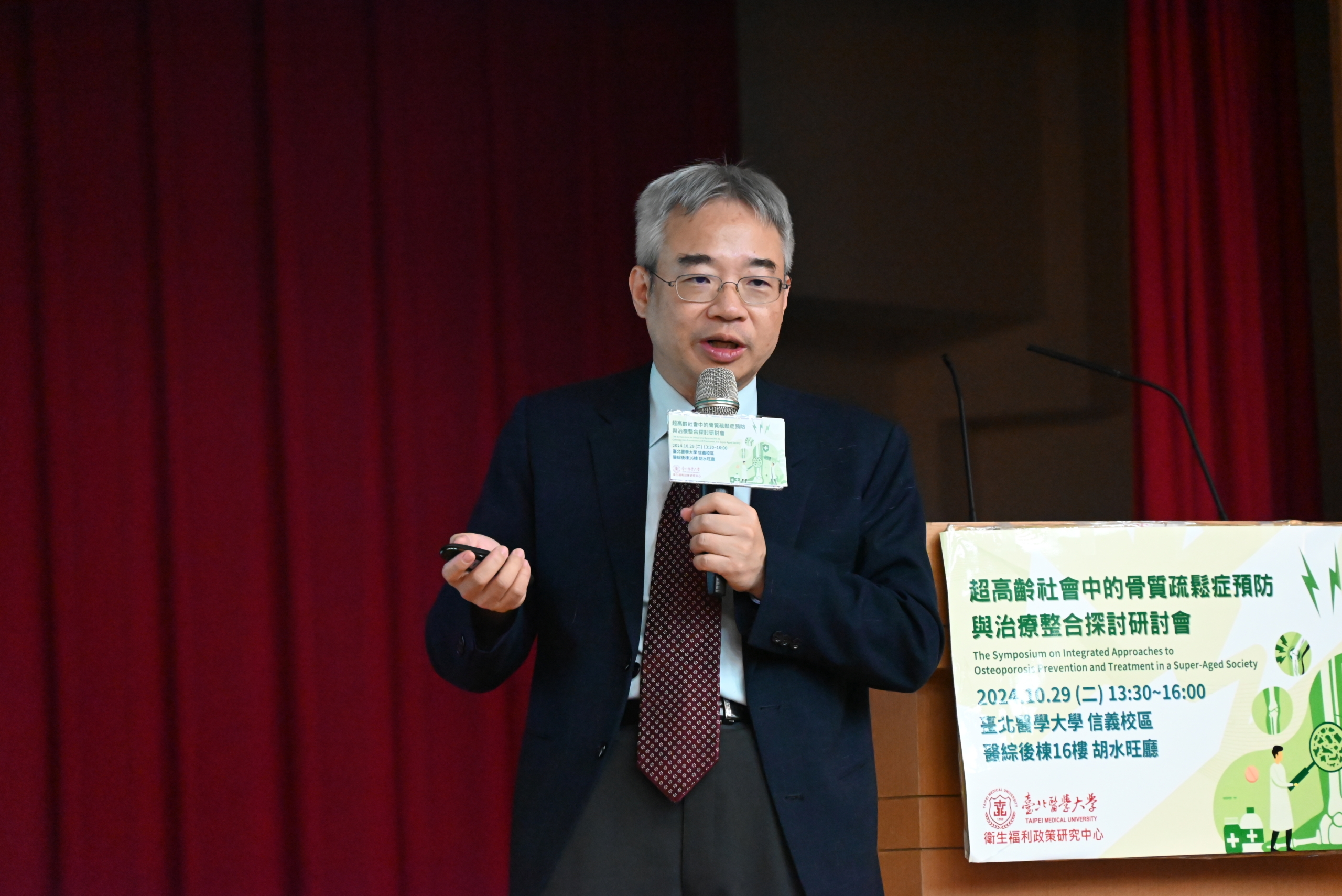
At the symposium, Dr. Chen Chong-Huan, President of the Taiwanese Osteoporosis Association, highlighted that osteoporosis-related fractures are having profound impacts on Taiwan’s healthcare system and patients’ quality of life, posing a significant public health challenge as the society ages. To address this, the association collaborated with scholars and clinical experts to release the “Taiwan Consensus on Adult Osteoporosis Prevention and Management” in 2023. This guideline integrates the latest scientific evidence and clinical experience, aiming to improve diagnosis, enhance early screening rates, and reinforce an integrated care system to reduce fracture incidence and its societal impact.
President Chen shared that since 1999, Taiwan’s annual incidence rate of hip fractures has risen significantly, reflecting the aging population and accumulating risk factors. Early detection is essential, with the guideline recommending that women over 65 and men over 70 undergo routine dual-energy X-ray absorptiometry (DXA) scans, along with risk assessments for individuals with a fracture history, low BMI, or long-term steroid use. To assist the public in understanding their risk, the International Osteoporosis Foundation (IOF) provides an updated Taiwan online questionnaire accessible at https://riskcheck.osteoporosis.foundation/zh_tw.
The guideline also introduces simple physical tests and self-assessment methods, such as height change, wall-occiput distance (WOD), and rib-pelvis distance (RPD), to help identify high-risk individuals. For self-assessment, the “Taiwan Postmenopausal Osteoporosis Self-Assessment Tool” (OSTAi) and “Taiwan Male Osteoporosis Self-Assessment Tool” (MOSTAi) are recommended, enabling those over 50 to assess their screening needs early.
Director Wu Meng-Huang Discusses Surgical Risks for Osteoporotic Patients and Clinical Improvement Strategies
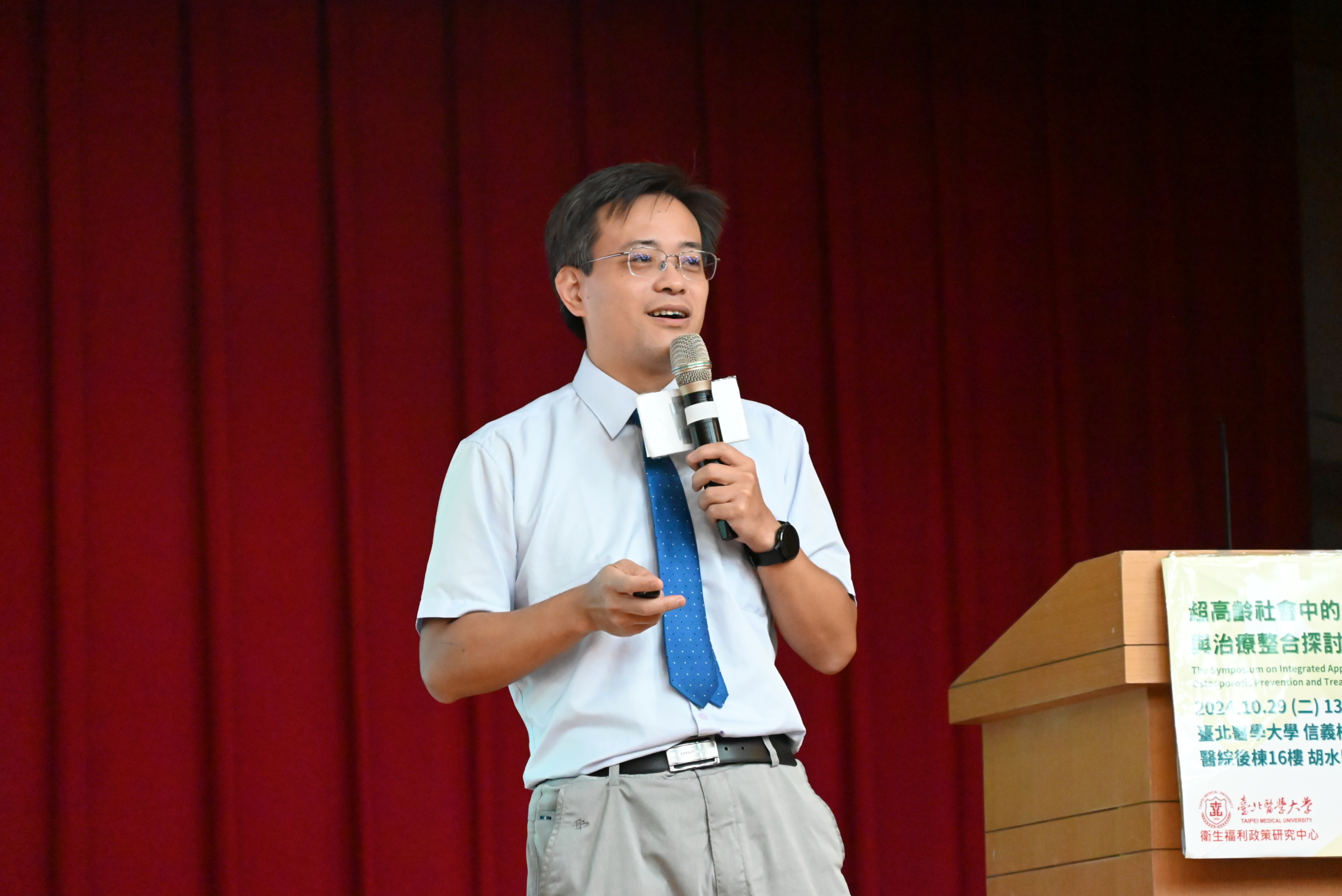
Dr. Wu Meng-Huang, Director of the Orthopedics Department at Taipei Medical University Hospital, elaborated on the surgical risks faced by osteoporotic patients and shared clinical improvement strategies during the symposium. With the aging population, osteoporosis prevalence has increased significantly, especially among those over 50, with rates reaching 23.9% for men and 38.3% for women. This poses substantial challenges for orthopedic surgery, as low bone density and decreased bone strength in osteoporotic patients can lead to reduced stability of fixation devices, particularly in spinal surgeries and joint replacements.
Dr. Wu emphasized that bone strength is crucial for preventing fractures. Osteoporosis patients are at higher risk of acute pain, increased surgical failure rates, longer hospital stays, and extended recovery periods. This is particularly concerning for patients with severe osteoporotic fractures, who often experience a decline in quality of life and an increased mortality rate. Therefore, effective osteoporosis management can significantly improve surgical outcomes and alleviate the burden on healthcare systems.
In addition to surgical support measures, enhancing bone density is essential for postoperative recovery. Research shows that patients with higher bone density experience better screw fixation outcomes after surgery, improving surgical success rates and significantly reducing the risk of revision surgeries. A recommended regimen includes preoperative drug therapy for two months and continuation for eight months post-surgery to maintain stable bone density and ensure long-term surgical benefits. These strategies not only provide clinical guidelines but also contribute to better surgical outcomes for osteoporosis patients, reducing hospitalization and complications.
Dr. Wu noted that the latest report from Taipei Medical University Hospital’s Osteoporosis Care Center highlights osteoporosis as a major challenge for orthopedic surgeries in elderly patients. With the recent rise in osteoporosis-related fractures, especially hip and spinal fractures, the center’s team utilizes comprehensive evaluation and treatment plans, including DXA scans and FRAX risk assessments, along with long-term follow-up to improve postoperative recovery and quality of life.
To address the needs of an aging society and enhance surgical outcomes for osteoporosis patients, the team will focus on developing treatment strategies for osteoporosis and sarcopenia, including Fracture Liaison Services (FLS), the application of smart medical technology, and the advancement of personalized treatment plans. Through remote monitoring, the medical team will track postoperative bone density changes in real-time, enabling early detection and intervention. Additionally, research will explore the optimal combinations of protein supplementation, exercise therapy, and nutrition programs to create personalized rehabilitation plans for osteoporosis patients. These innovative strategies aim to reduce osteoporosis-related complications and hospitalization rates, significantly improving patients’ quality of life and promoting the center’s comprehensive growth in orthopedic care.
Professor Liao Junde Discusses the Connection between Osteoporosis and Sarcopenia in the Elderly and Innovative Care Solutions
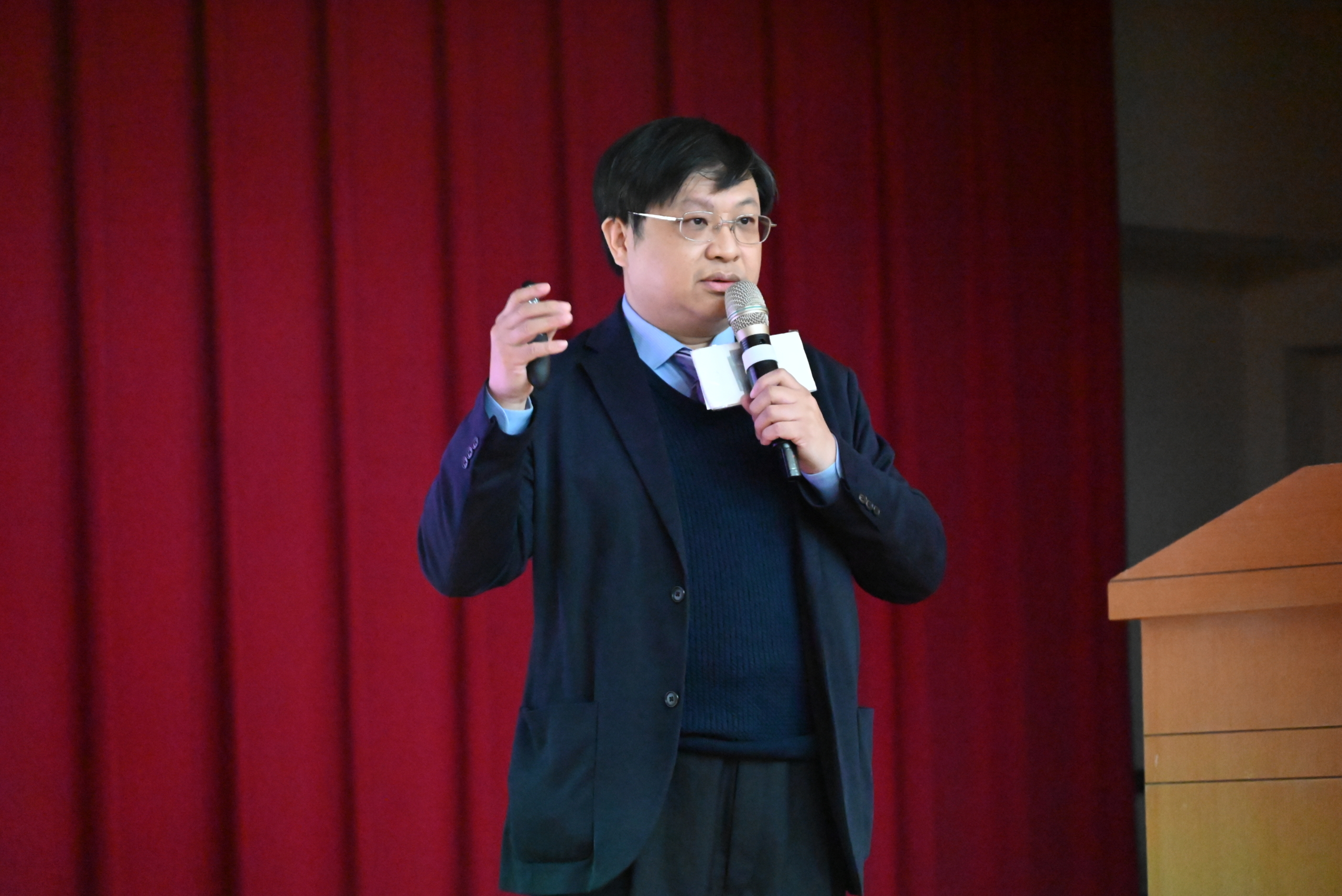
Professor Liao Junde, Assistant Professor of the Long-Term Care Master’s Program at Taipei Medical University, recently discussed the close relationship between osteoporosis and sarcopenia in the elderly and proposed specific clinical care strategies to address skeletal health challenges in a super-aged society. He noted that a meta-analysis of 56 clinical trials covering approximately 800,000 older adults found that sarcopenia patients are 3.06 times more likely to develop osteoporosis (95% CI: 2.30-4.08), while osteoporosis patients are 2.63 times more likely to develop sarcopenia (95% CI: 1.98-3.49). This study highlights the clinical importance of “osteosarcopenia.”
Through network meta-analysis, Professor Liao validated the effectiveness of low-intensity resistance training combined with auxiliary equipment for elderly patients, particularly those with knee osteoarthritis, based on data from 4,255 patients in 52 clinical trials. He emphasized that exercise plans suitable for the elderly should focus on low to moderate resistance training to minimize injury risk and achieve optimal muscle growth.
In terms of nutritional supplementation, Professor Liao stressed the critical role of high-dose protein supplementation in improving muscle mass in the elderly. Studies indicate that older adults require around 40 grams of protein daily to maximize muscle synthesis, twice the amount needed by younger individuals. Whey protein, rich in leucine, is particularly effective in enhancing muscle mass. Supplementing protein within an hour after exercise also aids muscle repair.
Professor Liao recommended that future clinical practice strengthen early diagnosis of osteoporosis and sarcopenia and design personalized exercise prescriptions and nutritional strategies. He suggested further exploration of various domains, such as comparing the effects of animal- and plant-based proteins (e.g., soy protein), optimizing combinations of different exercise types (isometric, isotonic, and isokinetic), and assessing the benefits of aerobic and integrative exercise plans.
In conclusion, Professor Liao stated that these research findings provide robust evidence for clinical care. He hopes that integrated care strategies will improve overall health and quality of life for the elderly and reduce the risk of complications associated with osteoporosis and sarcopenia.
Manager Kevin Cheng Highlights Meiji Chemical Pharma’s Drug Development for Osteoporosis Prevention and Management
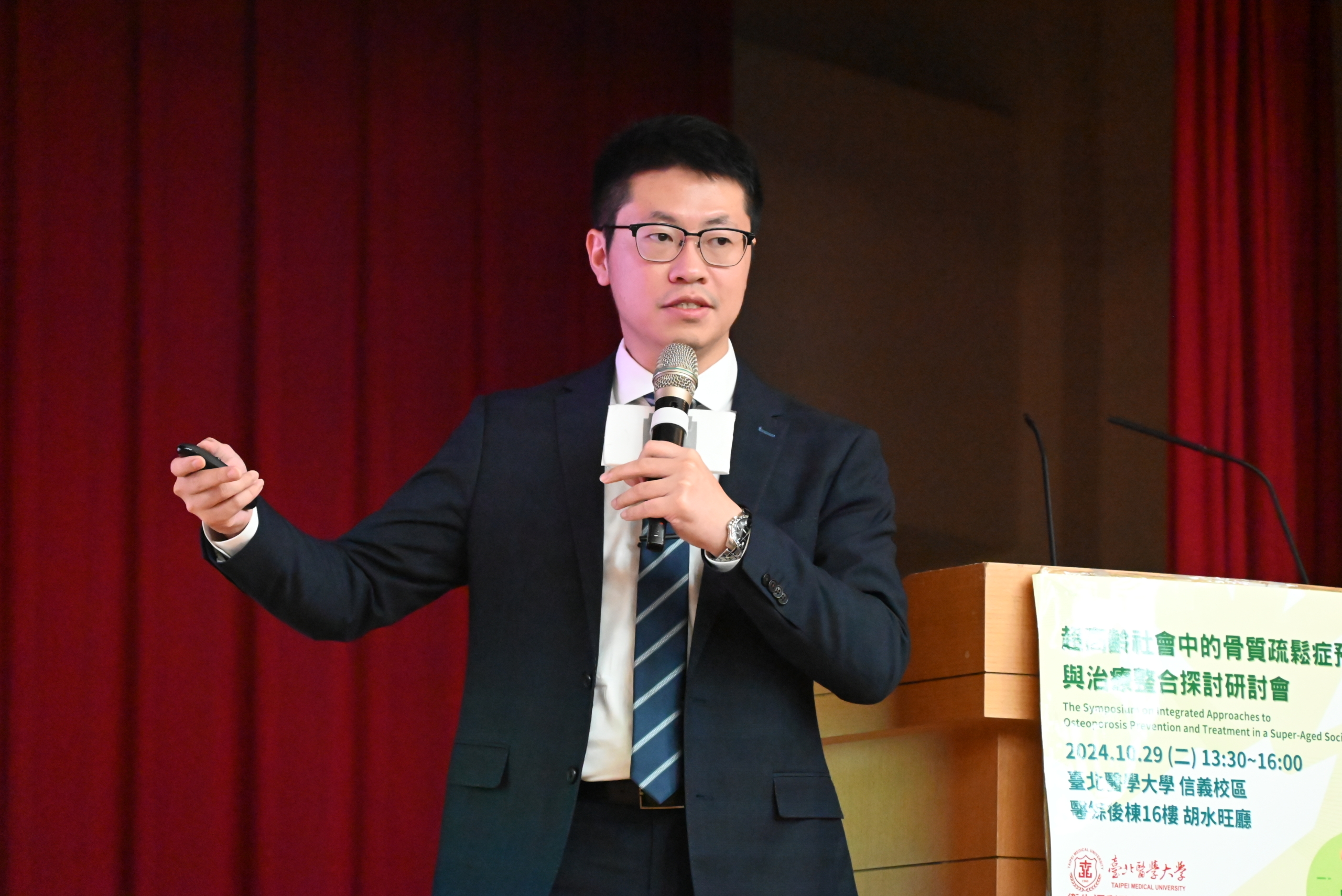
In his speech, Kevin Cheng, Market Access Manager at Meiji Chemical Pharma, detailed the company’s latest advancements and clinical application strategies for osteoporosis treatment. Cheng noted that osteoporosis drugs primarily fall into two categories: those promoting bone formation, such as parathyroid hormone (PTH) and sclerostin inhibitors, and those inhibiting bone loss, including bisphosphonates and RANKL inhibitors. Meiji has obtained approval for various bone-forming and bone-loss inhibiting drugs in Taiwan, now covered by health insurance, providing patients with more comprehensive treatment options.
Cheng analyzed the effectiveness and safety of osteoporosis medications available on the market, highlighting their stability and ability to significantly reduce mortality rates and the risk of new spinal fractures, underscoring the importance of early osteoporosis treatment. He stressed that enhancing public awareness of osteoporosis prevention and treatment is key to ensuring treatment success.
To promote comprehensive osteoporosis prevention, Meiji has launched a series of innovative service initiatives, including patient education, collaboration between healthcare providers and patients, and testing services. Specific measures include:
- Health Education Animation: Broadcasting osteoporosis prevention animations in 235 medical institutions nationwide to raise awareness of self-screening.
- Collaboration with the Menopause Society: Organizing a series of lectures on March 8th (International Women’s Day), May (Mother’s Day), and October 18th (World Menopause Day) to deepen prevention education, with 20 events planned for 2024.
- Bone Strength Care Plan®: Utilizing an automated reminder system to help patients receive annual intravenous treatments on time, reducing fracture risks due to treatment discontinuation.
- Bone Density Testing Mobile Unit: A mobile unit equipped with a DXA scanner provides pain-free and accurate bone density testing across various regions, helping the public detect osteoporosis issues early.
Cheng emphasized that Meiji Pharma will continue to invest in innovative osteoporosis services and research, advancing bone health for Taiwan’s population and improving patients’ quality of life through industry-academic collaboration and shared decision-making between healthcare providers and patients.
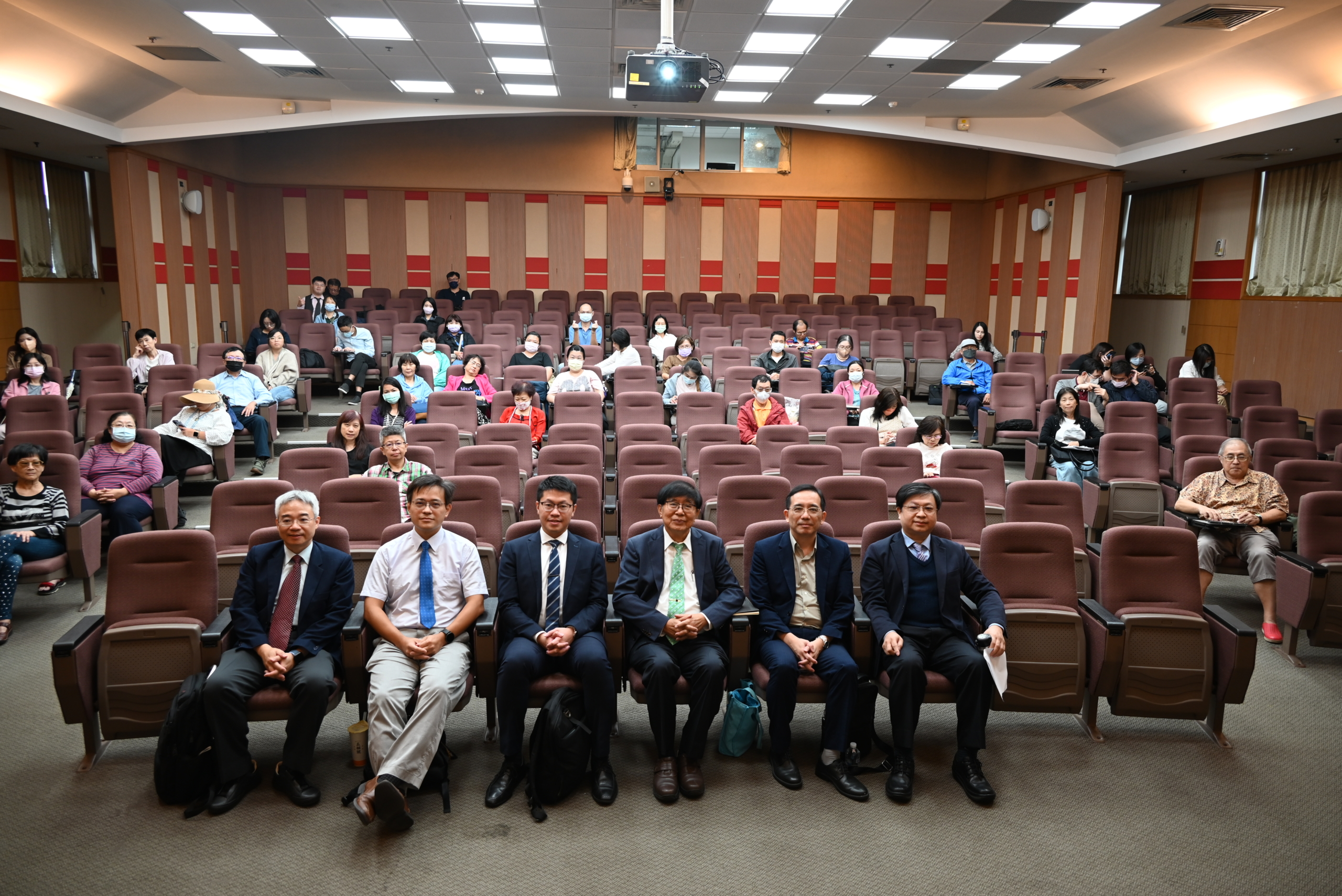
Image (Left to Right)
Chairman Chen Chonghuan of the Taiwan Osteoporosis Association; Orthopedic Department Director Dr. Wu Menghuang of Taipei Medical University Hospital; Market Access Manager Kevin Cheng of Meiji Chemical Pharma; Director Lee Po-Chang of the Health and Welfare Policy Research Center, Taipei Medical University; Deputy Director Lee Chongxi of the Health and Welfare Policy Research Center, Taipei Medical University; Assistant Professor Liao Junde of the Long-Term Care Master’s Program, Taipei Medical University
Related News Report
2024/10/30 Bong Chun-Fong E-Newsletter: Research Achievements and Future Trends in Osteoporosis Prevention and Treatment – Seminar on “Integrated Approaches to Osteoporosis Prevention and Treatment in a Super-Aged Society”

